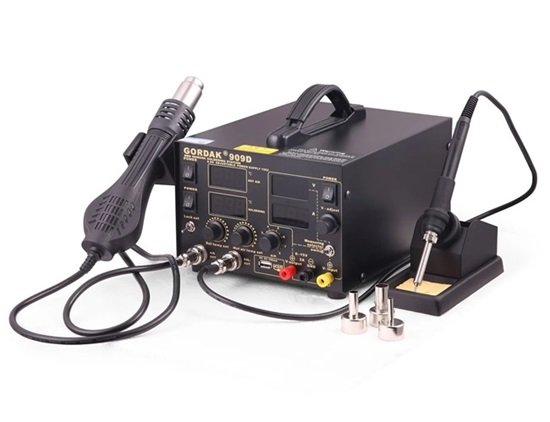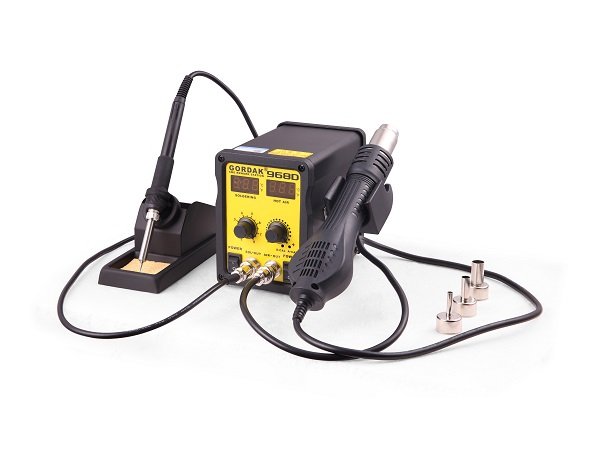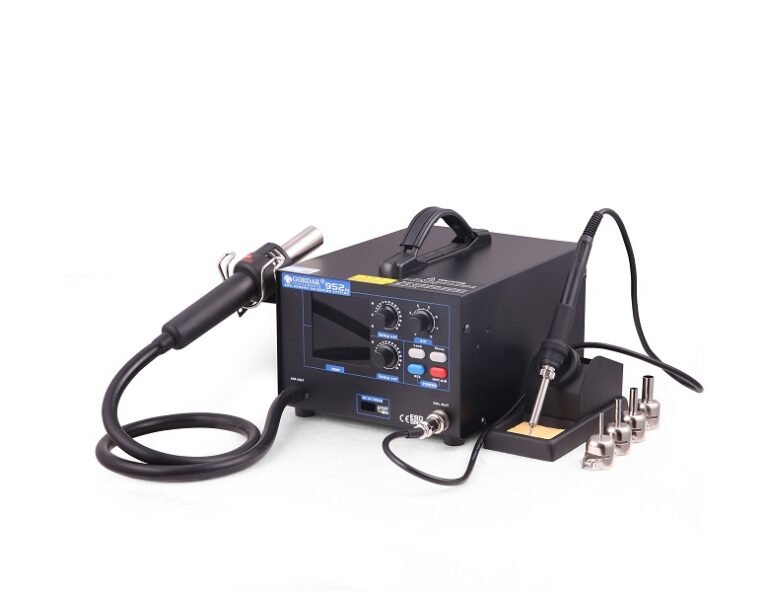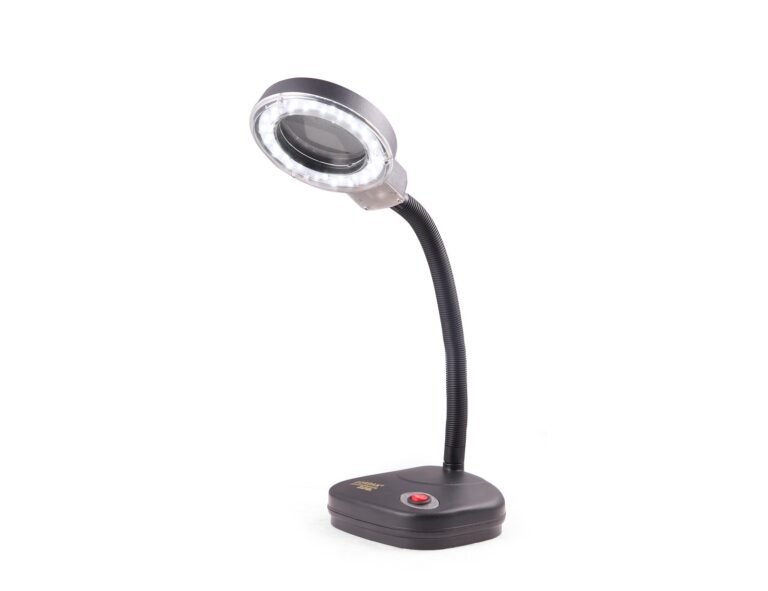Manual soldering tools are becoming obsolete as electronic mechanisms become more sophisticated, complicated, and miniature.
As a result, soldering rework stations were widely used. They have become an essential component in the production of electronics.
The soldering stations are outfitted with automatic techniques to efficiently complete any task. They can quickly troubleshoot, repair, and assemble any board component quickly.
These stations are used in a variety of laboratories, industries, and repair shops.
This widespread adoption can be attributed to its diverse applications, efficiency, and capacity to execute complex electronic manufacturing.
When selecting a soldering station power supply, keep in mind that one that reduces operator fatigue is advisable.
Soldering station classification
There is a large selection of soldering stations. They are broadly classified as follows:
u Analog and digital soldering station
Temperature balance is how analog stations work. The heating element continues to operate as long as its soldering tip doesn’t quite reach a specific temperature.
This station has one limitation in that it overheats the element. The power is turned off as a result of this. Once the temperature falls below this level, the power is turned back on again to heat the element.
The temperature sensors and magnetoelectric relay assists in the operation of the entire procedure.
Digital soldering stations are more accurate than analog soldering stations. It works with the aid of a PID regulator.
This regulator is controlled by a microprocessor, which contributes to the accuracy of the digital temperature monitoring method.

u Induction soldering station
High power and exceptional thermal balance are provided by the induction soldering station. Curie temperature is used for heating and thermal maintenance.
u Contact soldering station
A unit for adjusting the electronic temperature is included in the contact soldering station. This unit includes a soldering iron.
This station’s primary framework is power. The most recent stations have 10 – 200 watts. The soldering station power determines its effectiveness.
The increased power allows for the transmission of an even greater amount of heat. Overheating is a risk when there is too much heat.
As a result, this category is further subdivided into lead-soldering stations and lead-free soldering stations.
The difference between the two is subject to temperature differences. The temperature for a lead-free soldering station can reach as high as 250℃.
A lead-based station, on the other hand, requires just 180℃. The lead-free soldering station heats up much faster than its counterpart.
u Non-contact soldering station
There are two types of non-contact soldering stations:
A. Hot air soldering station
When the soldering iron alone is ineffective, the hot air guns soldering station plays a significant role.
This said station is needed to undo the microchips. The hot air guns have nozzles that aid in the flow of hot air streams easily.
As a result, SMD components are typically soldered with hot air guns.
The system eliminates the old portion of the board with no complications. It helps to save the board’s components as well as time.
B. Rework system
A soldering iron, desoldering gun, and hot air gun are all useful components of the rework system.
This system is often used to repair laptops as well as other electronic devices.
This method necessitates the use of certain automated functions as well as a distinct approach. It allows for the most efficient soldering and desoldering of any components.
Do you want to get a soldering station?
A soldering station power supply is quite essential for the production, repair, troubleshooting, and assembling of electronics.
For this reason, liaising with a professional manufacturer will aid in purchasing a top-notch product. Perhaps you aren’t sure of where to source one, do reach out to us today!



